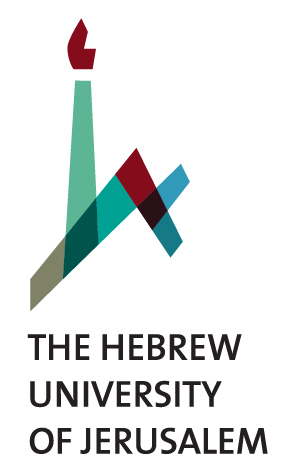Jacob Licht’s Collected Papers
This project aims at collecting a series of seminal studies, published by Jacob Licht during the first, exciting years immediately following the discovery of the Dead Sea Scrolls and the subsequent renewal of scholarly interest in the Apocrypha and Pseudepigrapha of the Old Testament. Licht, in his studies, described the portrait of a turbulent spiritual world that crystallized in the Second Temple period. His papers trace the religious worldviews reflected in a range of ancient sources that differ from each other in terms of their content and genre, exercising maximal sensitivity to their literary structure, linguistic makeup and unique ideas. All these aspects are discussed with an acute awareness to the exegetical responsibility of any scholar who attempts to interpret ancient sources that have survived only as fragmentary scrolls, while others are transmitted only in translation, detached from their original context and sometimes heavily reworked in order to adapt them to later, different perceptions.
Jacob S. Licht (1922–1991) was of the first generation of Qumran scholars, and from the very beginning stood out due to his balanced analytical skills and incisive understanding of the apocalyptic mood typifying the Dead Sea Scrolls. He was also a pioneer—especially in Modern Hebrew scholarship—in redirecting attention to apocryphal and pseudepigraphic literature, similarly composed during the Second Temple period, and translated some of them back to Hebrew.
His personal biography demonstrates the historical drama that has shaken the Jewish world in the 20th century between destruction and restoration, and his intellectual oeuvre exemplifies the powerful encounter with ancient, sometimes cryptic Hebrew literature, which—despite its antiquity and fragmentary state of preservation—evidently copes with existential challenges that are partly not so far from those with which we have been facing in modern times.
English Publications
Noam Mizrahi, “Theodicy and Protest in Jewish Apocalypticism: Introductory Comments,” in Theodicy and Protest: Jewish and Christian Perspectives, ed. Beate Ego, Ute Gause, Ron Margolin and Dalit Rom-Shiloni (SKI.NF 13; Leipzig: Evangelische Verlagsanstalt, 2018), 87–91; introducing an Engish translation of Jacob Licht, “Baruch’s Despair: A Turning Point in Jewish Apocalypticism,” ibid., 93–98
הפרויקט מכנס סדרת מחקרים חלוציים ומרחיקי ראות, שפורסמו בשנות הגילוי המסעיר של מגילות מדבר יהודה והתחדשות העניין המחקרי בספרים החיצונים, ובהם שרטט יעקב ליכט את דיוקנו של עולם רוחני גועש ורב תפניות שהתגבש בתקופת הבית השני – זמן עיצובה של היהדות ורקע צמיחתה של הנצרות. המאמרים המכונסים באסופה מתחקים אחר תפיסות העולם המשתקפות במקורות עתיקים ומגוונים בתוכנם ובסוגותיהם מתוך רגישות מרבית למבנם הספרותי, לדיוק לשונם ולייחודיות רעיונותיהם. היבטים אלה נדונים במודעות חריפה לאחריות הפרשנית המוטלת על מי שבא לדובב מקורות עתיקים שחלקם שרדו רק בצורת מגילות בלות וקטועות ואחרים נמסרו לנו בלשונות תרגום כשהם מנותקים מהקשרם המקורי ולעתים גם מעובדים ביד חזקה שנועדה להתאימם לתפיסות אחרות ומאוחרות יותר.
יעקב שלום ליכט (1922–1991) היה בן הדור הראשון של חוקרי מגילות מדבר יהודה, וכבר מראשית דרכו התבלט בשיקול דעתו המאוזן ובהבנתו הנוקבת את הלך הרוח האפוקליפטי השורה על ספרות המגילות. הוא גם היה חלוץ בהשבת המבט לספרים החיצונים, אף הם פרי יצירתה של תקופת הבית השני, ובנוסף לניתוחם הספרותי והרעיוני גם תרגם אחדים מהם חזרה לעברית. בסיפור חייו של ליכט מקופלת הדרמה ההיסטורית שטלטלה את העולם היהודי במאה העשרים בין חורבן לתקומה, ובמורשתו המחקרית מתגלה עוצמתו של המפגש המחודש עם ספרות עברית קדומה ולעתים גם חידתית, שמבעד לעתיקותה המופלגת ולמצב השתמרותה המקוטע ניכר בה כי היא מתמודדת עם אתגרים קיומיים שבחלקם אינם רחוקים מאלה הניצבים בפנינו כיום.
פרסומים בעברית
יעקב ליכט, מעולמה הרוחני של יהדות הבית השני: פרקי עיון במגילות מדבר יהודה ובספרים החיצונים, בעריכת נועם מזרחי, ירושלים: מוסד ביאליק והאקדמיה הלאומית הישראלית למדעים, תש"ף. [קישור]


